June 14 - 20, 2020: Issue 454
David Palmer
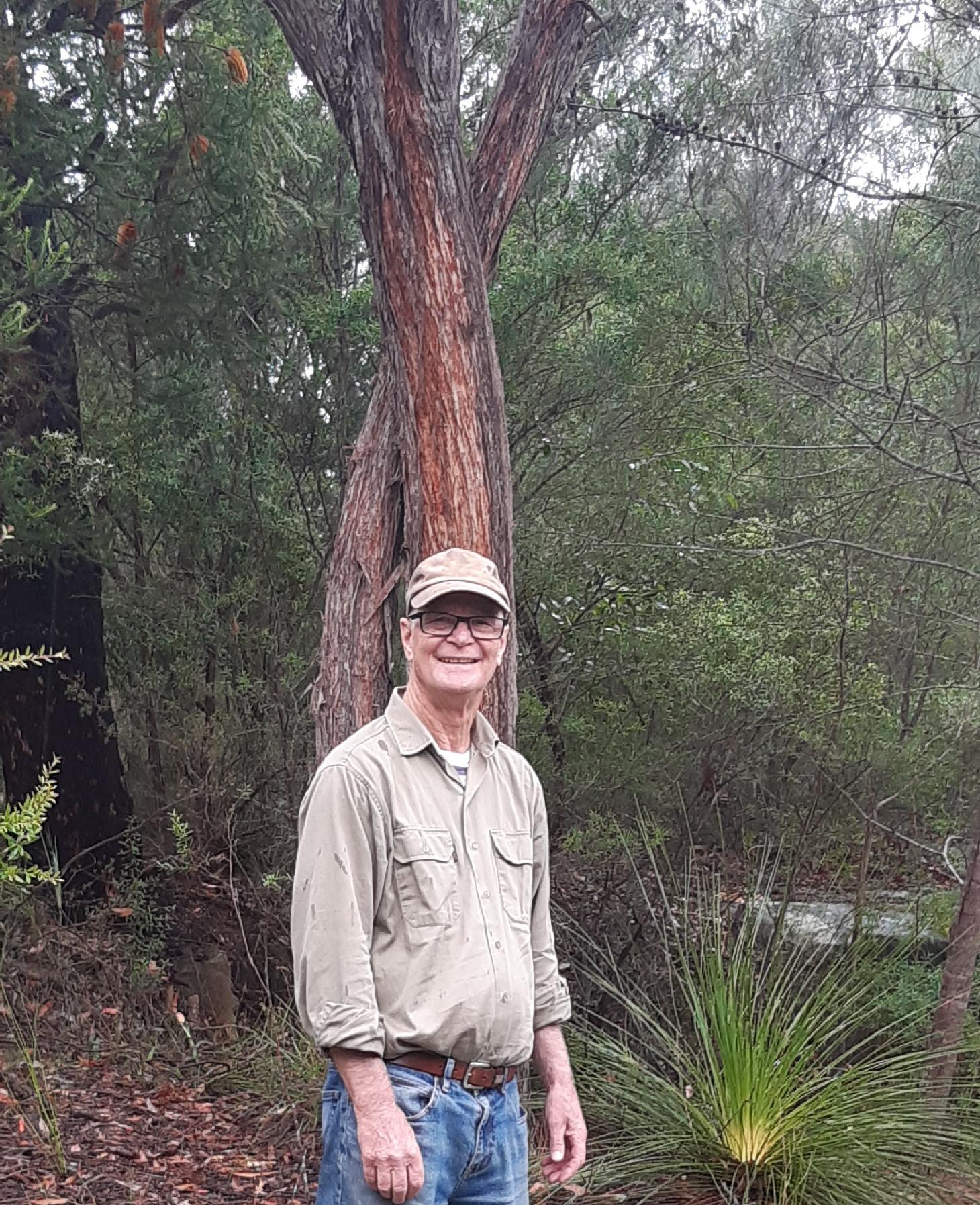
June, with its celebrations of World Environment Day, and how we can all look after our natural environment better, World Oceans Day and Ocean Week (including Whale Census Day), as well as World Wetlands Day on February 2nd each year, Endangered Species Day on the third Friday in May, the Backyard Bird Count during National Bird Week in October, are all ways people can connect with and know more about the world they are living in and how we too can contribute to the practice and knowledge that 'We Do Not Inherit the Earth from Our Ancestors; We Borrow It from Our Children'.
Residents are blessed with living in a place that is truly beautiful in all forms, from upland swamps and bush or coastal heath terrain, to estuarine, creeks, wetlands and lagoon environments and the eco-systems within these. We are 'spoilt for choice' when seeking some respite from the pollution of traffic or a too-hard day with a breath of fresh eucalypt tinged air or a melodic refrain from a tiny heathland bird or those that wing along the shores.
With the increase in urbanisation, balancing that with an increase in areas set aside for the original animal and plant inhabitants as well as people becomes a way to ensure the survival of these species and for future generations to experience them in their natural habitats. The State Governments Saving Our Species Program and the Federal Governments' Threatened Species Strategy, in conjunction with volunteer groups in Floating Landcare, the Pittwater Environmental Foundation, Friends of Freshwater, South West Lovett Bay Coast, the Pygmy Possum Project, to the hundreds of volunteers working in over 80 sites to remove introduced weeds and replant endemic species, including the Baha’i Temple Community - Pittwater Natural Heritage Association Bushcare group saving Grevillea caleyi at Ingleside, backed up by a grant from Greater Sydney Local Land Services and the NSW Office of Environment and Heritage, are just part of how actual 'hands in the dirt' happens.
Among their memberships are individuals who are not only passionate and active in looking after the future of the environment right here and right now, they are also skilled and trained individuals in a range of areas that coalesce to support getting that work done. You don't need a degree in Horticulture or to be an Environmental Lawyer though - just a willingness and the energy to get out and help out is all that is required and needed.
The Pittwater Natural Heritage Association is one of these groups. PNHA was formed to act to protect and preserve the Pittwater areas major and most valuable asset - its natural heritage. PNHA is an incorporated association seeking broad based community membership and support to enable it to have an effective and authoritative voice speaking out for the preservation of Pittwater's natural heritage.
PNHA Aims
- To raise public awareness of the conservation value of the natural heritage of the Pittwater area: its landforms, watercourses, soils and local native vegetation and fauna.
- To raise public awareness of the threats to the long-term sustainability of Pittwater's natural heritage.
- To foster individual and community responsibility for caring for this natural heritage.
- To encourage Council and the NSW Government to adopt and implement policies and works which will conserve, sustain and enhance the natural heritage of Pittwater.
Pittwater Natural Heritage Association seeks to raise awareness and provide information and advice to our members on issues such as:
Native Tree Canopy
Identification of trees local to your particular area. What to plant to replace dead or dying trees, and how to care for trees. The characteristic form of the native tree canopy is a major contributor to Pittwater's sense of place.
"Bush Friendly" Gardens
Selecting plants for your garden that will live in harmony with nearby bushland and provide habitat for native animals and birds.
Building and Landscaping
Promoting practices which preserve and protect the visual qualities of the landform, preserve soil stability and prevent erosion of steep slopes and siltation of waterways.
Weed Infestation
Information on noxious and environmental weeds, weed identification and methods of control and eradication.
Living with Wildlife
Maintaining habitat and wildlife corridors for our rich and diverse native fauna. Understanding the impacts of introduced birds and animals and uncontrolled domestic pets.
Keeping our Waterways Healthy
Using and enjoying our waterways and estuaries whilst maintaining appropriate water quality and habitat for aquatic creatures. Caring for the streams, wetlands, saltmarsh and mangrove systems that are an integral part of our waterways.
Rock Platforms, Beaches and Dunes
Protecting and preserving the plant and animal communities on rock platforms. Restoration and regeneration of dune systems and maintenance of their stability.
If you would like to join please fill out their Membership Application Form. Alternatively if you would like to contact them for information on any of their projects, please email: pnhainfo@gmail.com
This Issue Pittwater Online News shares a small insight into a PNHA volunteer and some of the other Groups' projects he has been involved in over the decades. These illustrate that active practice of looking after the future for generations of children, animals and plants yet to be born and grow, and doing that right here and right now.
When and where were you born?
I was born at the beginning of the post war baby boom era, in 1946 in Windsor NSW. My father was in the RAAF based at Richmond and when he was discharged the family settled in Windsor where dad opened a furniture and upholstery business.
Where did you grow up and what did you do for fun as a youngster?
I grew up in Windsor, which in those days was a country town and a centre for local agriculture. The town was largely surrounded by paddocks and farms, with the Hawkesbury River on one side and South Creek on the other, As a youngster I spent most days with my friends, playing in the paddocks, swimming in the river and paddling on the creek in canoes which we made from sheets of corrugated iron waterproofed with tar,. As was usual in those days, kids were told to “get out of the house, and don’t come home until dinner time”.
One adventure, when I was a teenager, was when a couple of friends and I built a raft out of plastic drums and bamboo and paddled it down the Hawkesbury River to Sackville, about 20 km away by road, but a lot longer on the meandering river. The journey took us three days.
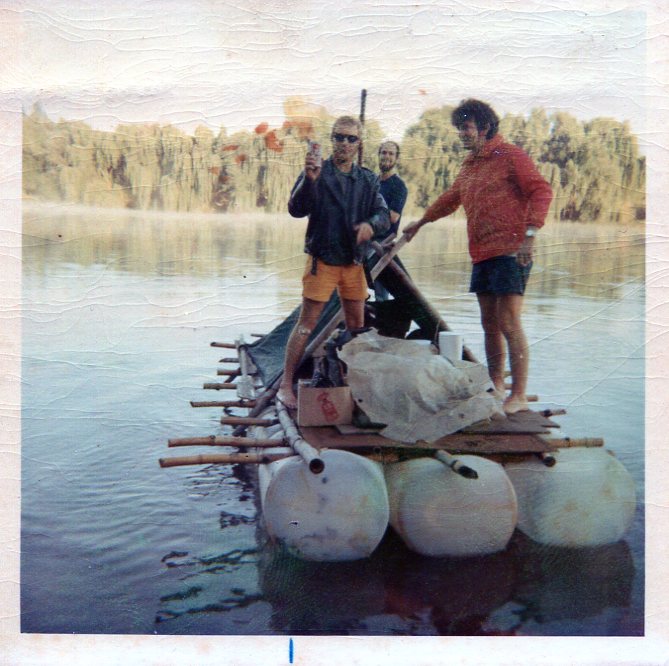
Image: Leaving Windsor on our journey to Sackville. Photo D Palmer
What did you want to do when you first left school and what did you end up doing?
I’ve had a few different careers, which has widened my perspective and given me a range of knowledge and skills that have been useful on my journey through life. Fortunately the early days of my working life were in a time of growth and optimism, and jobs were easier to get than nowadays. My first job was in a local bank, but after a couple of years I realised that banking was not for me. I had liked learning chemistry at school so I decided to move into the world of industrial chemistry. I studied at Sydney Technical College and moved up the ranks from laboratory assistant to production manager at a Sydney company making ingredients for detergents.
During this time I became interested in sailing, so I thought I would learn how to build my own sailing boat. This was in the seventies, when there were dozens of factories around Mona Vale making all types of fibreglass boats: catamarans, trailer-sailers, fishing boats and large cruisers, so after nine years in the chemical business I left and got work in a fibreglass boat factory.
Wanting to learn more about fibreglass, I enrolled in a course at Brookvale College of TAFE. Through the seventies the local fibreglass industry was growing, causing a strong demand for TAFE courses in fibreglassing. After a few years I was approached to apply for a position as a teacher of fibreglass at Brookvale College, and so began a 25 year career in TAFE.
However, not all of that time was spent teaching fibreglassing. By the early nineties, the local fibreglass industry was in decline, and so was the demand for fibreglassing courses. Luckily, while I was teaching fibreglassing I was studying for a Bachelor of Education degree, so when the time came to close the fibreglass section at Brookvale TAFE, I was able to build on my degree by enrolling in a post graduate diploma course in Teaching English to Speakers of Other Languages, enabling me to continue at TAFE, teaching English to adult migrants.
I finally retired in 2006 as head teacher of English for Speakers of Other Languages at Hornsby College of TAFE. Although this was the end of paid work, it enabled me to devote more time to my unpaid work as an environmental volunteer.
Where did your love of the Australian bush commence?
I had always been keen on outdoor activities and nature and have always valued our natural environment for what it is, an integral part of the web of life on our planet. However I didn’t realise that as individuals we should take an active part in caring for our bushland until after I was married and started living in Ingleside.
In 1991 a huge threat to our bushland came with the announcement of the Ingleside Warriewood Land release and this is when I realised that I had to do something. As president of the Ingleside Residents Association from 1992 I was a leader in the fight against residential development in our bushland suburb.
After the Ingleside section of the land release was scrapped we decided that the best way to look after the Ingleside bushland was to form a Landcare group. As president of the Ingleside Residents Landcare Group worked with some wonderful people and learned more and more about our natural environment and what we can do to preserve it.
When and why did you join Pittwater Natural Heritage Association?
I joined Pittwater Natural Heritage Association (PNHA) in its inaugural year (1994) as a representative of Ingleside Residents Association. This was when we were still campaigning against the Ingleside Warriewood land release and our committee saw PNHA as a like-minded organisation which would be a good ally.
This proved to be correct, not only in the Ingleside Warriewood campaign, but in the campaign for preservation of the Warriewood escarpment, which I consider to be right up there on the list of the most successful environmental campaigns in the history of Pittwater Council (more on that later). Likewise, when I was president of Ingleside Landcare Group I networked closely with PNHA and when Ingleside Landcare Group closed down we chose PNHA as the most suitable organisation to receive our assets. l had been an active committee member of PNHA for some years before that and have been secretary since 2009.
What are some of the major and minor projects you have undertaken as a member of volunteer groups?
A lot of my time as an environmental volunteer has been spent campaigning, either for something or against something, but I have been involved in other environmental projects as well.
As mentioned above, through the early nineties I was involved in the campaign against the Ingleside Warriewood Land Release, along with others in the Ingleside Residents Association, and a number of other community groups in the Pittwater Local Government Area.
Then with the Ingleside Residents Landcare Group I managed a number of environmental projects, in conjunction with Sharon Kinnison from the Coastal Environment Centre, focusing on testing water quality in creeks around Ingleside and regenerating riparian zones. The group also undertook weed control activities, flora and fauna surveys and campaigned against inappropriate developments in Ingleside.
In 2008 to 2010 The Ingleside Residents Landcare Group did a comprehensive study of birds in the upper Mullet Creek valley, the report on which was used by the consultants to the Department of Planning and Environment in their 2016 report on Biodiversity within the Ingleside Precinct.
At the same time I took over the job of coordinating a campaign to have some Ingleside land added to Kur-ring-gai Chase National Park.
This campaign was started in the 1970’s by Pittwater Flora and Fauna Society, under the leadership of a neighbour and local identity, Bert Payne. Over the years the Society declined as members moved away or became less active so I took over the campaign and was rewarded when the addition of 12 ha of bushland in Cicada Glen Road to Ku-ring-gai Chase National Park was gazetted in February 2007.
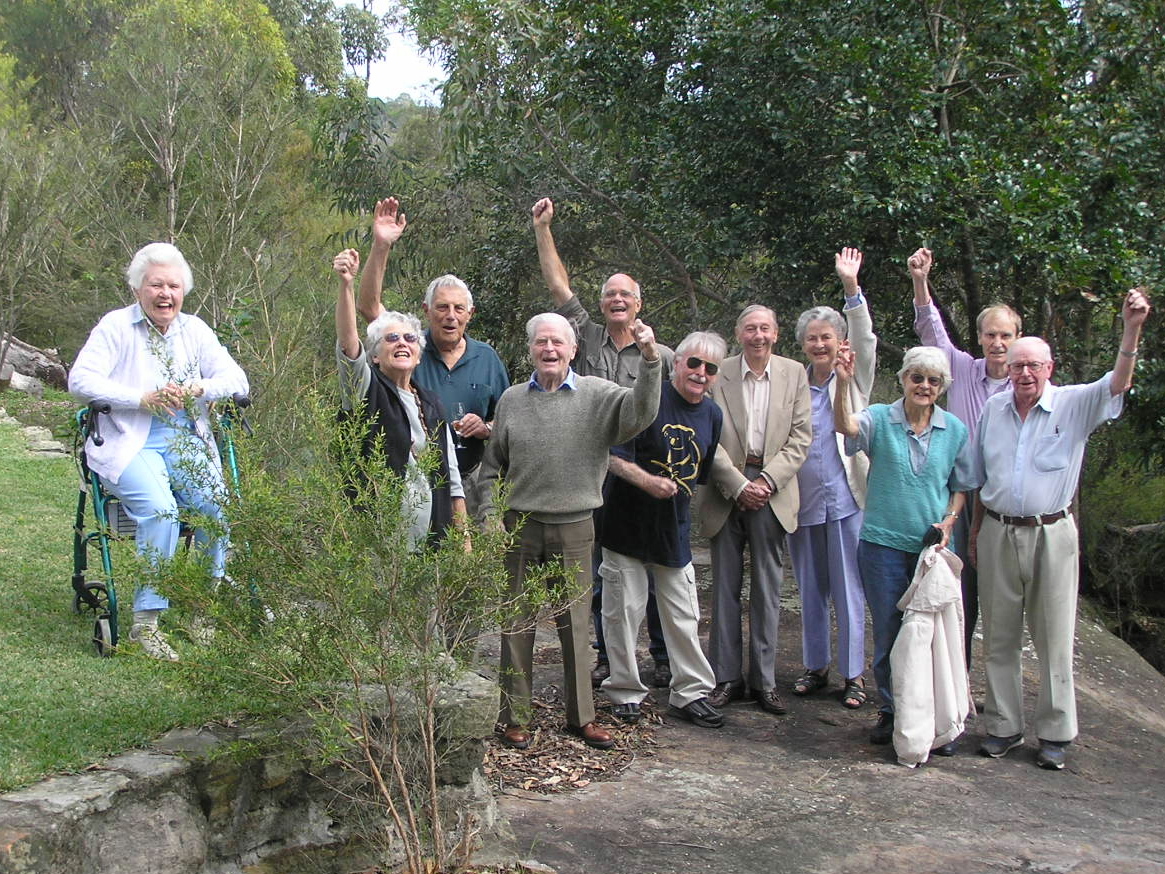
Image: Members of Pittwater Flora and Fauna Society celebrate the gazettal of crown land in Ingleside being added to Ku-ring-gai Chase National Park. Photo D Palmer
Then the announcement in 2011 that NSW Roads and Maritime Services was starting work on upgrading Mona Vale Road from two lanes to four set local environment organisations buzzing. Data collected by Northern Beaches Roadkill Committee showed that hundreds of native animals were being killed each year on the existing road trying to move between Garigal and Kur-ring-gai Chase National Parks and between Ingleside Chase Reserve and Ku-ring-gai Chase National Park. A four lane road would prevent any movement between these reserves, leading to a decline in species living in Garigal and Ingleside Chase Reserve. Jacqui Marlow, Marita Macrae and I as representatives of PNHA lobbied for fauna overpasses and underpasses on the upgraded road. This took many years and many meetings with RMS personnel. A commitment was made by RMS to build a fauna overpass and underpass on Mona Vale Road West, but I think we dealt with five different project managers over the seven years until in 2018 the announcement was made that the upgraded Mona Vale Road East would have a fauna overpass and underpass as well.
Image: Marita Macrae, Jacqui Marlow and David Palmer celebrate the announcement of a fauna bridge to be built over Mona Vale Rd East. Photo M Macrae
These have all been very rewarding projects, however, the most important and rewarding project that I have been involved in was the campaign for preservation of the Warriewood Escarpment.
I started the campaign in 1994 when the Ingleside Residents Association received notice of a development application for a 28 hectare portion of the escarpment. After a few years campaigning in association with a couple of other local groups we approached PNHA for support, which led to the formation of Pittwater Escarpment Committee. Our campaign got the support of Pittwater Council Mayor Patricia Giles who brought the council on side. General Manager Angus Gordon and his team went above and beyond to negotiate with all landholders and State government agencies, supported by our group who lobbied, took up petitions and organised community letter writing to show that the community supported their actions.
Portion by portion more land was brought into public ownership until finally in 2010 Pittwater Council approved purchase of the final portion of land. The resulting Ingleside Chase Reserve is now over 70 hectares in area.
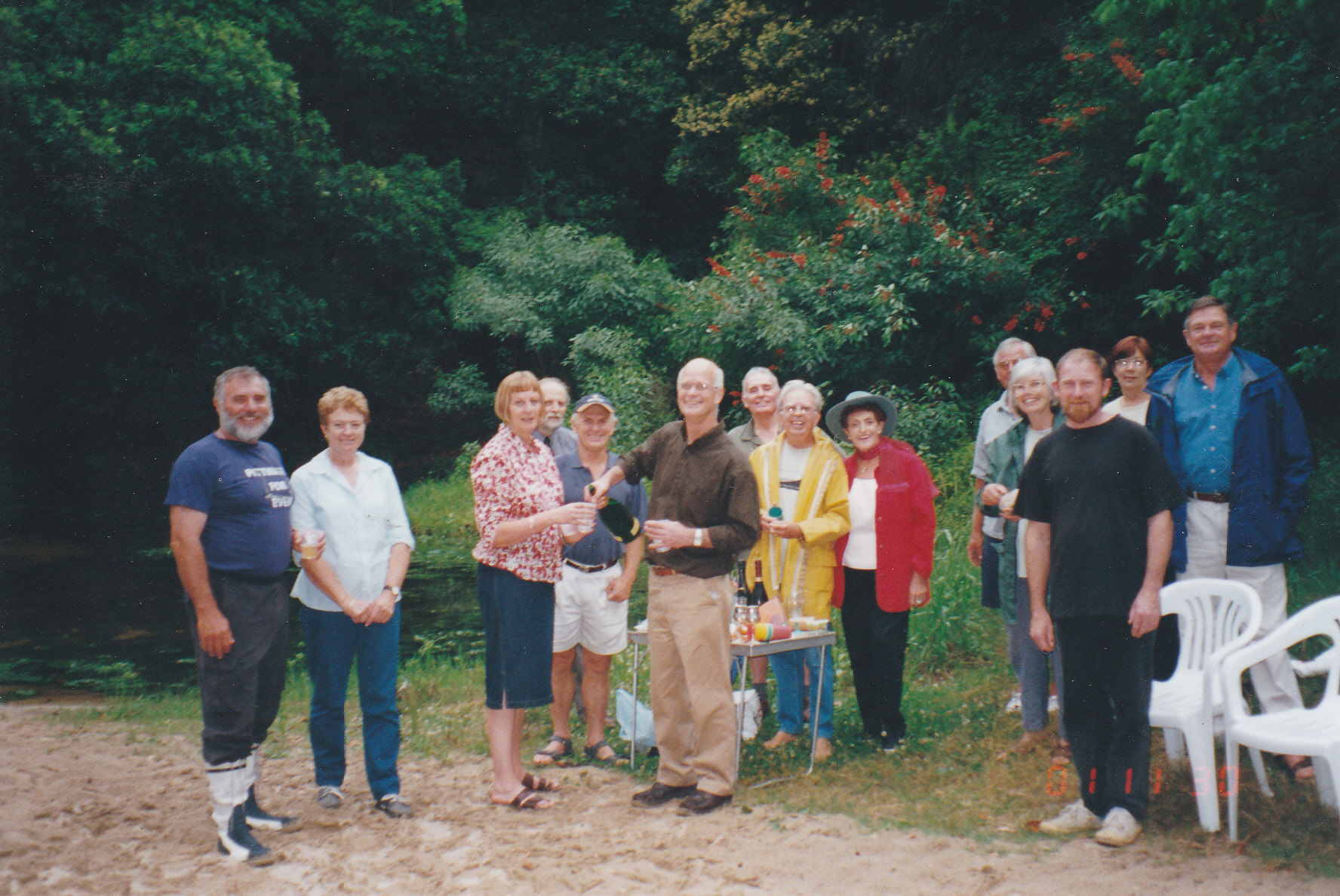
Image: Celebrating the acquisition of escarpment land at Irrawong waterfall. Photo D James
Currently my main interest is co-ordinating the Pittwater Natural Heritage Association’s project at the Baha’i Temple, Ingleside, improving the habitat of Caley’s Grevillea (Grevillea caleyi), an endangered species of native plant found in Ingleside, Terrey Hills, Duffys Forest and Belrose and nowhere else in the world.
What other projects would you like PNHA to look into developing/undertaking?
Now that we have a much bigger and better resourced council on the Northern Beaches we are looking for support from them and state government in a couple of areas in which PNHA has been working for some years.
Weeds in Pittwater are a never ending problem which PNHA has been tackling for many years with the aid of grants and volunteers. However PNHA believes that there should be a bigger focus by Northern Beaches Council on weeds which are a major risk to our biodiversity and do a lot of damage in our bushland reserves and other natural areas.
We are always looking for volunteers of all ages to help with our bushcare programs. We would especially like to see more younger people get involved.
Another area of concern is the portions of privately held bushland in Pittwater which we believe are environmentally sensitive and should be in public ownership. These have been the focus of some of our past campaigns, but there is still more to be done. We would like to see Northern Beaches Council develop a policy for acquiring such land.
Which are your favourite native plants?
I have a fondness for the Red Bloodwood tree, Eucalyptus gummifera. I remember coming to our house as a young boy when my parents had it as a weekender and climbing the bloodwoods in our yard. I love the prolific yellow blossom that attract so many birds in summer and autumn. During flowering season, if I wake at night I can hear the sounds of the grey headed flying foxes feeding on the blossom outside our bedroom window.
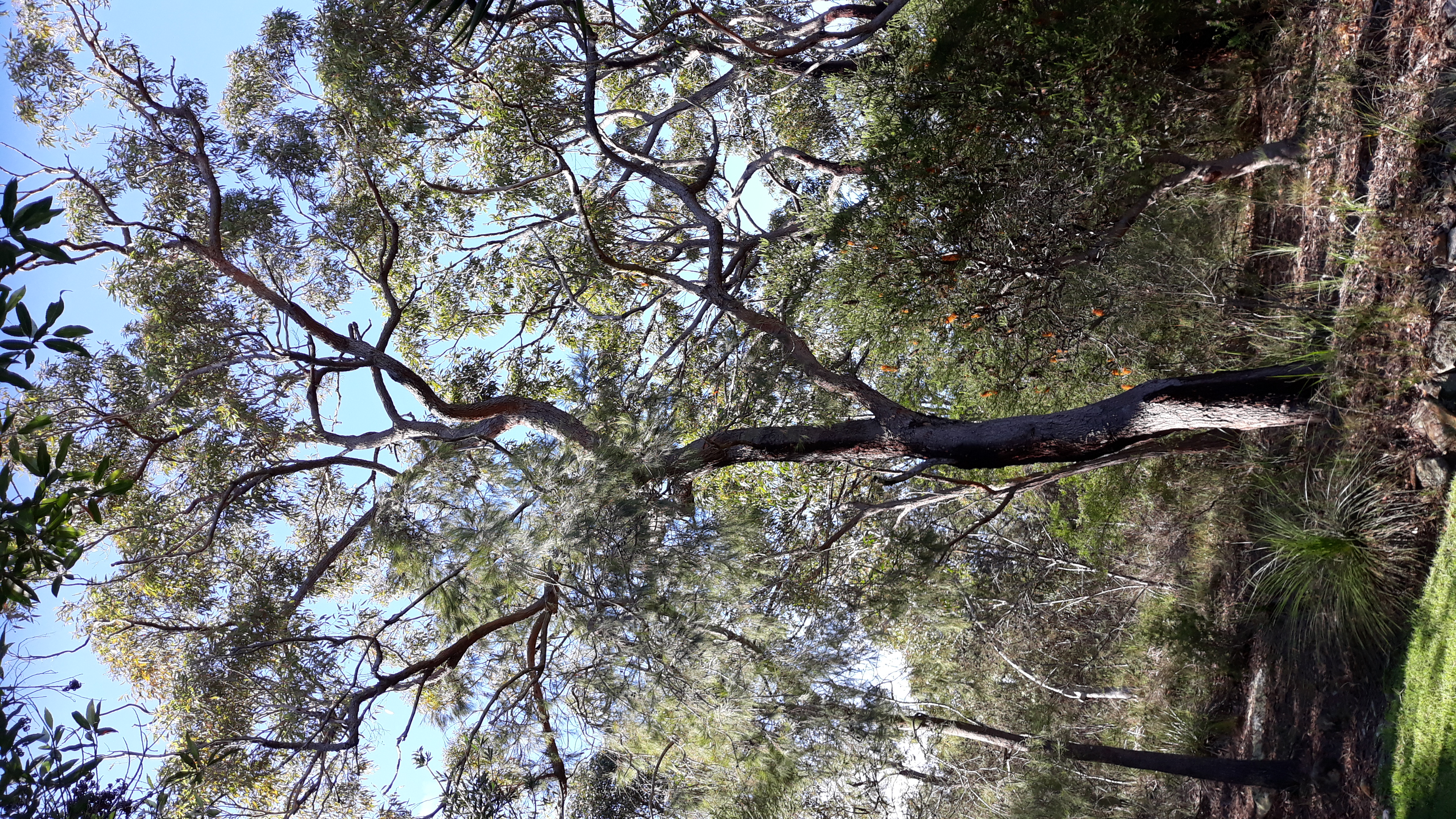
Image: Eucalyptus gummifera. Photo D Palmer
Also, having worked on the preservation of Grevillea Caleyi for so long, I have developed a proprietary interest in these rare plants and their welfare.
Image: Grevillea caleyi. Photo M Macrae
Why is “putting something back” as a volunteer important to you personally?
I started volunteering because I saw something that I thought was wrong – destruction of Ingleside bushland- and felt that I had a moral duty to do something about it. But I must say that I get personal satisfaction from taking on a task, learning what has to be done and seeing it through, sometimes with a positive outcome. And, as many have said before, having a passion about something gives us purpose. However it would be a much harder road to walk if it wasn’t for the wonderful, selfless, committed volunteers I’ve met along the way.
And, if I can give a bit of a plug at this point, anyone who may be interested in “putting something back” into the Pittwater environment can look at the PNHA website, Facebook page or contact PNHA at pnhainfo@gmail.com
What is your favourite place in Pittwater and why?
My favourite place is Ingleside Chase Reserve. I find it a tranquil retreat where you can feel that you are away from suburbia. The escarpment has many interesting rock formations, watercourses and flora and fauna. Just walking through it is enough to appreciate what a gem it is and how lucky we are to have it.
What is your motto for life or a favourite phrase you try to live by?
Don’t be afraid to try something new and if you believe that what you are doing is right then don’t give up.